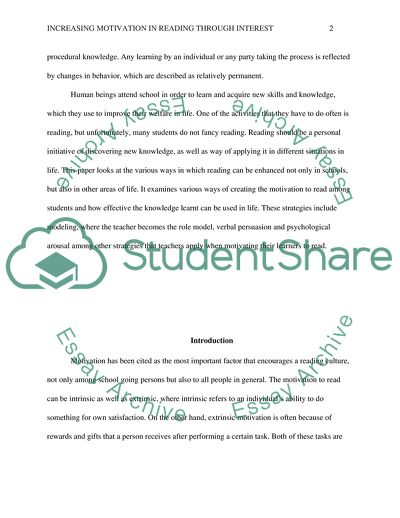Cite this document
(Increase Motivation in Reading through Interest Essay Example | Topics and Well Written Essays - 2250 words, n.d.)
Increase Motivation in Reading through Interest Essay Example | Topics and Well Written Essays - 2250 words. https://studentshare.org/education/1839521-increase-motiviation-in-reading-through-interest
Increase Motivation in Reading through Interest Essay Example | Topics and Well Written Essays - 2250 words. https://studentshare.org/education/1839521-increase-motiviation-in-reading-through-interest
(Increase Motivation in Reading through Interest Essay Example | Topics and Well Written Essays - 2250 Words)
Increase Motivation in Reading through Interest Essay Example | Topics and Well Written Essays - 2250 Words. https://studentshare.org/education/1839521-increase-motiviation-in-reading-through-interest.
Increase Motivation in Reading through Interest Essay Example | Topics and Well Written Essays - 2250 Words. https://studentshare.org/education/1839521-increase-motiviation-in-reading-through-interest.
“Increase Motivation in Reading through Interest Essay Example | Topics and Well Written Essays - 2250 Words”. https://studentshare.org/education/1839521-increase-motiviation-in-reading-through-interest.


